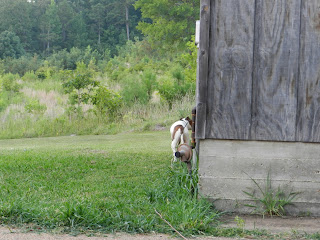An ethogram is a catalogue or inventory of all behaviours or actions exhibited by an animal used in ethology. The behaviours in an ethogram are usually defined to be mutually exclusive and objective, avoiding subjectivity and functional inference as to their possible purpose.[1][2][3][4]
For example, a species may use a putative threat display, which in the ethogram is given a descriptive name such as "head forward" or "bracing display", and not "head forward threat" or "bracing threat". This degree of objectivity is required because what looks like "courtship" might have a completely different function, and in addition, the same motor patterns in different species can have very different functions. Often, ethograms are hierarchical in presentation. The defined behaviours are recorded under broader categories of behaviour which may allow functional inference such that "head forward" is recorded under "Aggression".
Sometimes, the definition of a behaviour in an ethogram may have arbitrary components. For example, "Stereotyped licking" might be defined as "licking the bars of the cage more than 5 times in 30 seconds". The definition may be arguable, but if it is stated clearly, it fulfils the requirements of scientific repeatability and clarity of reporting and data recording.
Some ethograms are given in pictorial form and not only catalogue the behaviours but indicate the frequency of their occurrence and the probability that one behaviour follows another.
Rocky's doing well leashless. But I want him to be comfortable on a tie-out. And so, I've taken to tying them both out first thing in the morning and last thing at night. Please keep in mind that they are dogs whose lives were made much better by coming out to the Farm. And that they do run Free when we say it's okay.
I want them to become very very comfortable just hanging out around the house.
 | |
| This is a poor photo but it still conveys what Rocky is up against, as the guard dog and all. |
It was about here that I called him, repeatedly. Note the change in posture.
Rocky is a dog. We love him. We anthropomorphize his every action and expression. But at the end of the day, Rocky is a dog.
I am not.













No comments:
Post a Comment
Be nice. Nothing inappropriate, please.